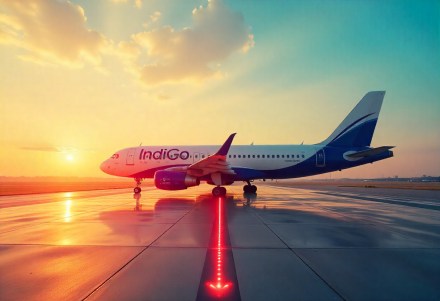The government is considering granting “infrastructure status” for aircraft manufacturing, in a bid to create a domestic production base for the sector, which is heavily import-dependent. The move is expected to encourage joint ventures with foreign partners to facilitate domestic manufacturing of regional passenger and cargo aircraft, catering to the country’s burgeoning middle class, sources told FE. In recent years, regional air connectivity has increased significantly, with the opening of many new airports, and policy support via Ude Desh ka Aam Naagrik (UDAN) scheme.
The inclusion of aircraft manufacturing in the Harmonised Master List (HML) of Infrastructure will unlock targeted financial and policy support to accelerate development for the sector. These include concessional long-term financing from banks, access to funds from insurance and pension funds, easier external commercial borrowings and various tax incentives and exemptions.
The HML currently encompasses five main sectors and 38 sub-sectors, with the inclusion of “large ships” under Transport and Logistics in September 2025. The list is updated periodically based on economic needs aligned with national goals like Make in India and sustainable development. Petroleum refineries are also being considered for inclusion in the list.
The Airbus C295 tactical transport aircraft, a partnership between Airbus Defence and Space and Tata Advanced Systems Limited (TASL), has made a beginning in the manufacturing of regional transport aircraft in India. The first C295 produced in India is scheduled to roll out in September 2026. The facility will provide 40 locally manufactured aircraft to the Indian Air Force by August 2031.
Besides local sourcing of components, such facilities will play a big role in skilling Indian workers in assembly and aviation technologies, increasing the available pool of skilled manpower for expansion of the sector.
“C295 is the starting point for aircraft manufacturing in India. Now, we have to take it forward, at least regional aircraft manufacturing like ATR (Avions de Transport Régional) and Embraer,” an official said.
ATR dominates the turboprop in regional connectivity, while Embraer dominates the regional jet.
Embraer S.A. (Brazil) is the world’s third-largest commercial aircraft manufacturer (after Airbus and Boeing), specialising in regional jets, executive jets, and defence aircraft. ATR aircraft’s joint venture between Airbus and Leonardo. The company is known for regional aircraft like the ATR 42 and ATR 72, which are valued for their fuel efficiency and ability to operate from shorter runways.
India’s Regional Connectivity Scheme (RCS), which was launched in October 2016, has operationalised 619 routes and connected 88 airports across the country. This scheme aims to provide affordable air travel and promote balanced regional development.
In 2024 alone, 102 new RCS routes were launched, including 20 in the Northeastern States. The scheme has facilitated affordable air travel for 15 million passengers, and it aims to extend this to 40 million more in the next decade through a revamped UDAN initiative to add 120 new destinations. The scheme also prioritises connecting remote, hilly, and aspirational districts, including the North Eastern region, through support for helipads and smaller airports.
Bharatiya Vayuyan Adhiniyam 2024, which came into force on January 1, 2025, aims to foster indigenous manufacturing under the ‘Make in India’ and ‘Atmanirbhar Bharat’ initiatives, align regulations with international conventions such as the Chicago Convention and the International Civil Aviation Organization (ICAO), and streamline regulatory processes by simplifying license issuance.
